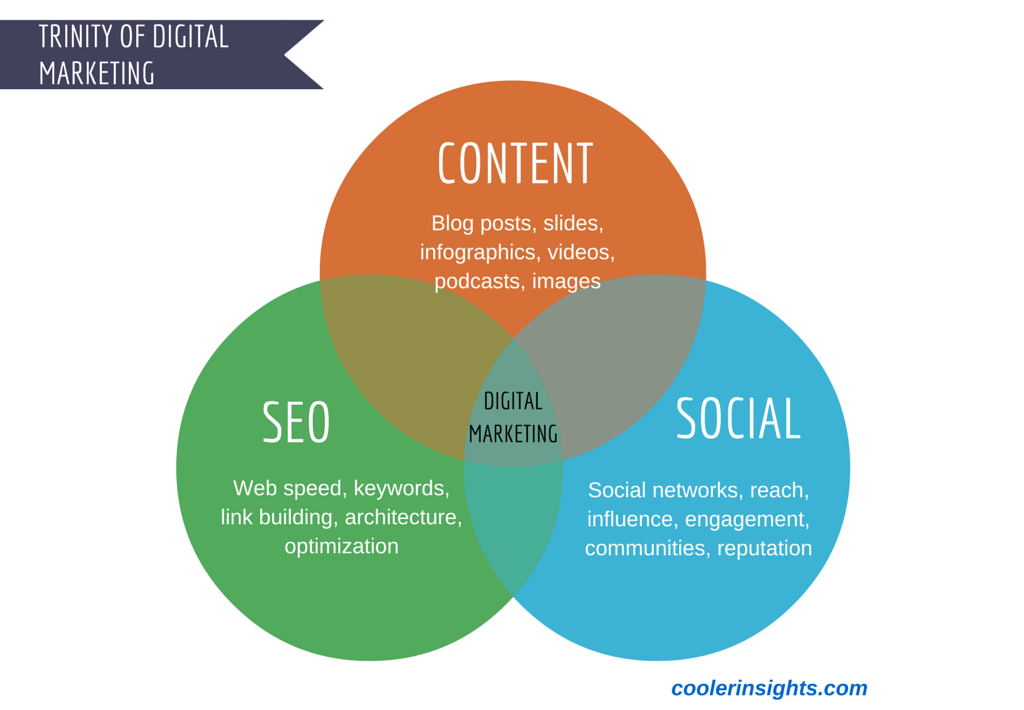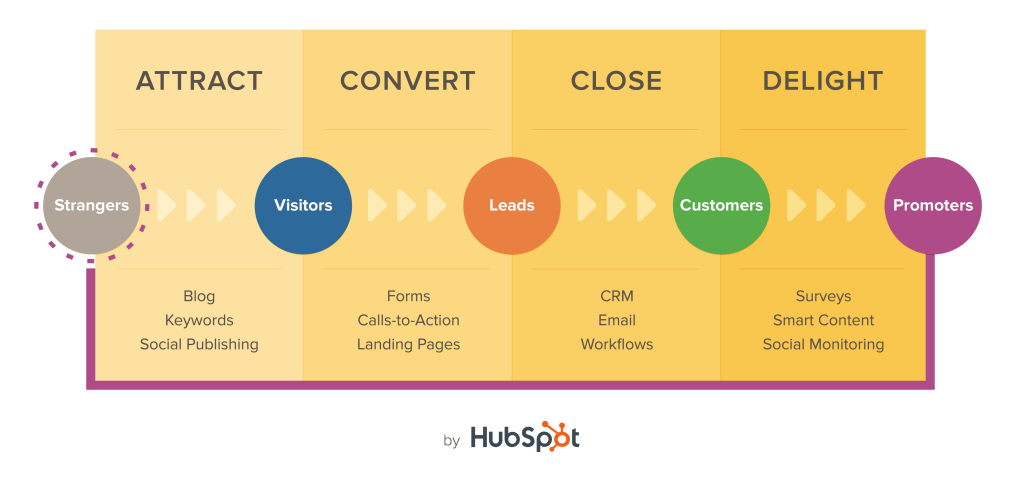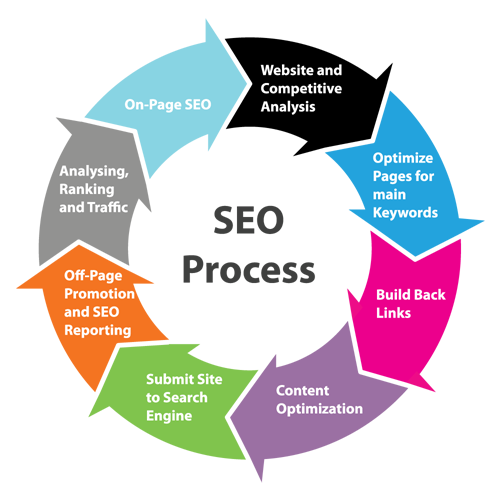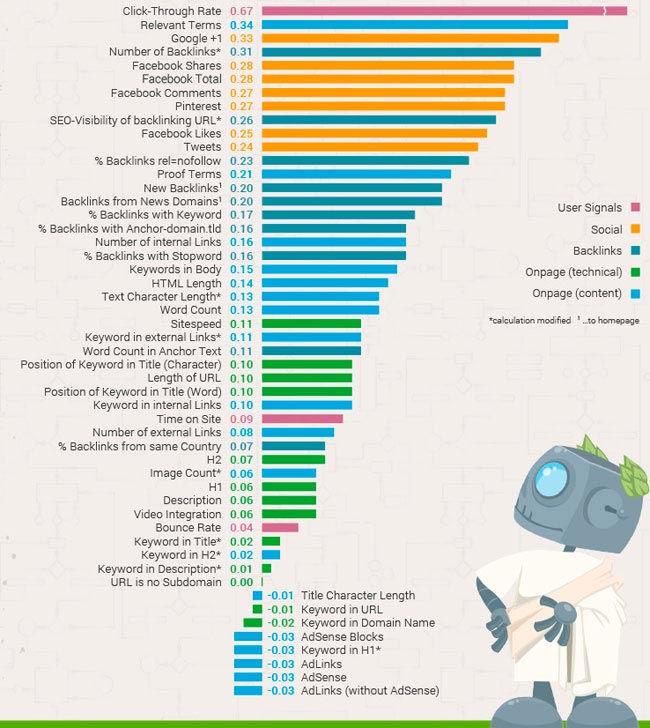Content marketing, Search Engine Optimization (aka SEO) and social media marketing.
Together, these three can work powerfully to propel your digital marketing strategy forward.
What do these digital marketing techniques involve? More importantly, how do you integrate them in a coherent and synergistic manner?
Understanding Content Marketing
Let us first begin with content marketing. As I’ve highlighted on my home page, content is the life blood of search engines and social media.
Everything you read, view or listen to on the Internet is a piece of content.
Content marketing, on the other hand, is defined by the Content Marketing Institute to be…
“Content Marketing is a marketing technique of creating and distributing valuable, relevant and consistent content to attract and acquire a clearly defined audience – with the objective of driving profitable customer action.”
On the Web, content could include anything from e-Books, slideshare slides, infographics, videos, blog posts, to Facebook status updates, Instagram photos, and tweets. Note that the focus here is on the content more so than the channels.
Content Marketing Institute’s 7 Step Content Marketing Framework (see below) provides a good way of thinking how content marketing works.
Courtesy of Content Marketing Institute
Longer and more valuable forms of content are usually gated. In other words, you need to enter particulars like your name, email address, and organisation to gain access. They are normally employed as part of an Inbound Marketing strategy to generate leads.
HubSpot’s visual below gives a good summary of how content works hand in hand with inbound marketing (read their definition here for details).
Search Engine Optimization (SEO) Defined
Search Engine Optimization or SEO is defined as the process of affecting the visibility of a website or a web page in a search engine’s “natural” or un-paid (“organic”) search results. SEO’s ultimate goal is to get on page one of Google, Bing or Yahoo’s Search Engine Results Page (SERP).
When we talk about SEO, we try to guess a couple of things:
- The algorithm of search engines and how they work;
- What our targeted customers are searching for;
- The actual search terms or keywords that they use when doing so; and
- How well our content (text, image, video, etc) would rank on search engines.
To optimize a website for search, we look at a whole host of factors. They include both technical (eg speed of website loading, HTML and associated coding, meta tags) and non-technical (eg content, website architecture) areas.
A key strategy in SEO is to increase the number of backlinks, or inbound links, to one’s website. In the past, people have tried to do so unethically through fake websites or article directories created to generate links. However, such “black hat” practices have been heavily penalised by Google, which is constantly tailoring its search algorithm to reward genuine content creators.
A good way to visualize the SEO process is seen by the SEO Process Cycle below (courtesy of Digital Marketing Sapiens). You can also read more about mastering SEO for WordPress here.
Courtesy of Digital Marketing Sapiens
Social Media Marketing in a Nutshell
Last, but certainly not least, we have social media marketing.
According to Mashable.com, Social media marketing is the “process of gaining website traffic or attention through social media sites”. Social media marketing normally focuses on creating content that attracts attention and interest while encouraging online communities to share it on their social networks.
Social media marketing covers a wide gamut of activities targeted at growing one’s online influence. It can be anything from starting a blog, participating in an online forum, to online community management of Facebook pages, Twitter accounts, and Pinterest boards.
In the past, social media marketing was driven by word-of-mouth methods. In other words, it results in earned media rather than paid media. These days, however, advertising on social networks like Facebook appears to be a must for brands to gain visibility amongst their target audiences.
A subset of social media marketing involves working with online Influencers. Also known as Influencer Marketing (see ABCs of Influencer Marketing), it includes partnering bloggers, YouTubers, Instagrammers, and other “influential” content producers on social media channels to raise brand awareness or trigger sales.
Courtesy of Jason Bettinger
How Content, SEO and Social Media Works Together
As you can see from the definitions of the content marketing, SEO, and social media marketing, there are many areas of overlap between the three.
I love Lee Odden’s analogy of how the three works together:
- Content = bread that forms the foundation of digital marketing
- SEO = peanut butter that forms a nutritional base to help content be discovered
- Social media = jelly that helps content stand out and sweetens it for consumption

Courtesy of Top Rank Blog
Social Media Buzz and SEO Ranking
According to Search Metric’s annual study using Spearman’s Correlation analysis (a statistical method), social signals appear strongly correlated with the ability of an article to rank well on SERPs.
In other words, the more shares you get from Facebook and +1s on Google Plus for an article, the greater the likelihood that the same blog article could appear on page one of Google’s search results.
The whole list of SEO ranking factors can be viewed in the chart below:
Courtesy of Search Metrics
Now there is an ongoing debate going on (see Social Signals Are Not An SEO Ranking Factor) about whether social media “buzz” directly influences a web page’s ranking. However, almost all SEO experts agree that content which is relevant, useful or entertaining gets shared, “liked”, and commented on in social networks. This improves the likelihood of an article getting clicked on (a major ranking factor) and for people to link to it.
Having said that, what Search Metrics’ chart tells us is this:
- A holistic, context-based approach to content quality is key to search rankings.
- Consider the relevance and utility of your content to what your users are searching for.
- Technical performance and the content architecture of your website is important. Don’t frustrate users – and search engine crawlers – by burying stuff several layers deep.
- Keywords are less important these days. Thus, avoid stuffing your blog posts with meaningless keywords if they don’t provide value.
- Social media sharing and buzz helps our content gain greater authority on search results – whether direct or indirect. As Jay Baer has famously said: “Content is fire, social media is gasoline”
The Content, SEO and Social Media Marketing Cycle
To integrate content, SEO and social media marketing, consider this 5 step process with the acronym ASOSA:
- Analyze – Do keyword research, study trending keywords and topics, and evaluate past performance.
- Synthesize – Create, curate and assemble content that is relevant, useful, educational and entertaining.
- Optimize – Check for SEO ranking factors, content architecture, and technical areas.
- Socialize – Share and promote content on social media channels, build relationships, give value.
- Advertise – If need be, advertise content on search engines or social media channels.
Note that the last “A” of advertising your content is optional. Increasingly though, I find that many businesses find it harder to get their content to generate buzz if they don’t pump prime it on search engines or social networks. Organic virality is fast becoming a white elephant.
When you integrate your content marketing processes with SEO and social, you are able to enjoy far greater mileage in your digital marketing efforts. This virtuous cycle feeds itself by helping you to build your online communities, widen your pool of visitors, generate leads, and convert them to customers.
Courtesy of Paige Rowett
Finally, let me end with two quotes from masters in the field.
“The days of SEO being a game outsmarting algorithms are over. Today content strategy and valuable, sustainable strategies are essential, not just tricks and links.” ~ Adam Audette, Chief Knowledge Officer, RKG
“Social is the way our work gets discovered. Content that is truly exceptional, unique, and useful can earn tremendous awareness through social media, and that social amplification often leads to great links, which leads to great rankings.” ~ Rand Fishkin, CEO/Co-Founder, Moz









We are one of the top leading seo company in India.This is an informative and useful article.
Great post!
Thanks for sharing the valuable information about SEO, content marketing and social media. All are beneficial for a website to drive traffic, improve ROI.
I am really happy to say it’s an interesting post to read about Content Marketing and SEO. I learn new information from your article, you are doing a great job. Keep it up
Very interesting to read this article.I would like to thank you for the efforts you had made for writing this awesome article.
These are genuinely fantastic ideas in about blogging. You have touched some nice points here. Any way keep up writing.
by cloudi5
visit this blog to know more about SEO content marketing – https://www.cloudi5.com/blog/prominence-of-content-marketing-in-the-digital-world-80
Great post. Thanks for sharing
I would like to thank you for the efforts you have made in writing this article.
Thanks for sharing this very good post. Very inspiring! (as always, btw)
Nice post.
Thanks for sharing information about SEO.
Can you tell me please.
Excellent blog. Keep sharing such information on regular basis.
How to rank a website on Google?
Good informative blog.
Superb! I love the way you provide info in this article and audience who will come to read or finding such information may also like it.
Thanks for sharing the article. These tips are really amazing and very helpful. I learned many tips from your blog. Well done! Keep posting.
Its really an nice content.Thank you for sharing this article with us!!
This is very nice one and gives in-depth information. Thank You For sharing such a great blog. It’s really helpful for such. Keep sharing these types of blogs.